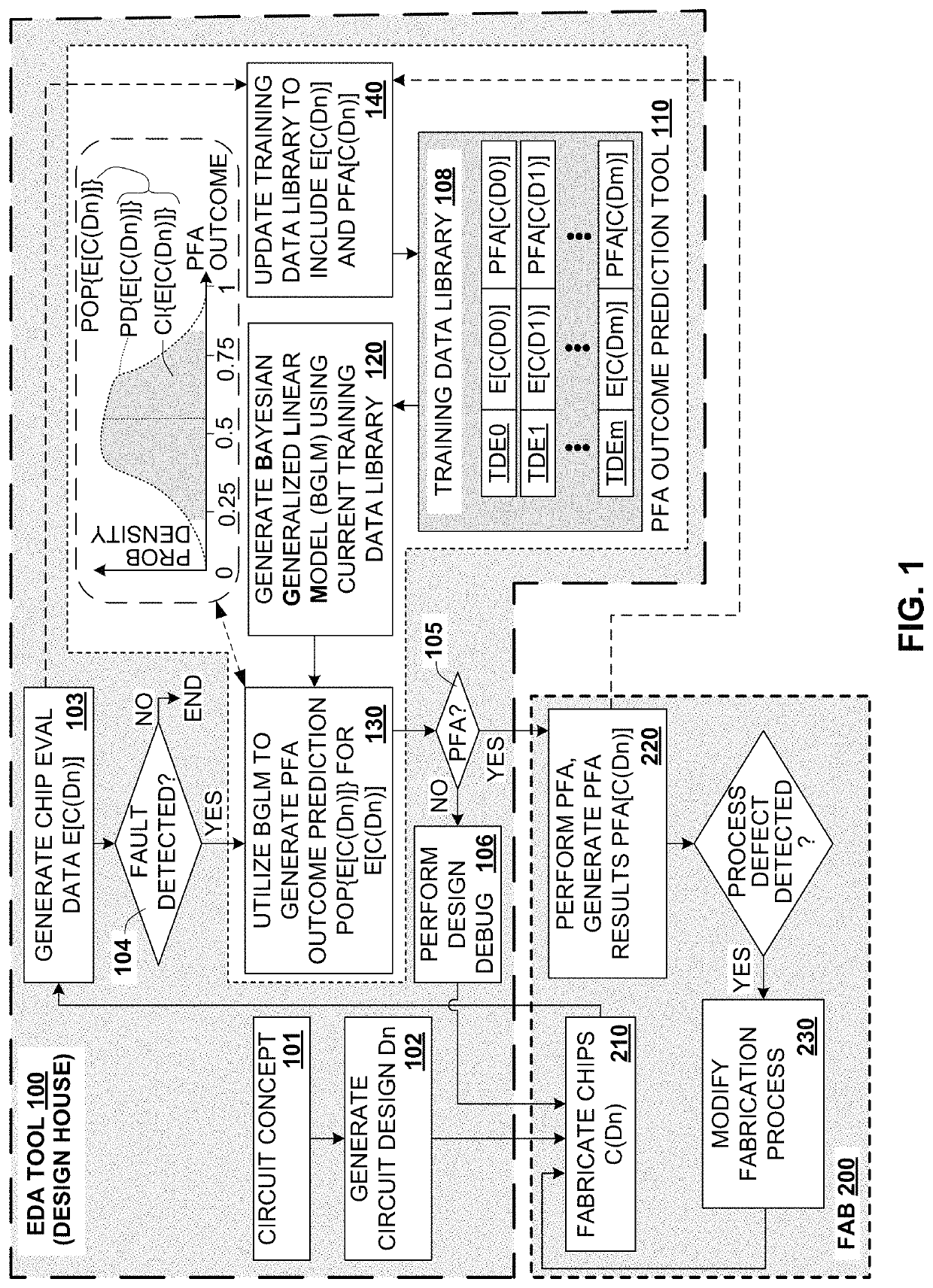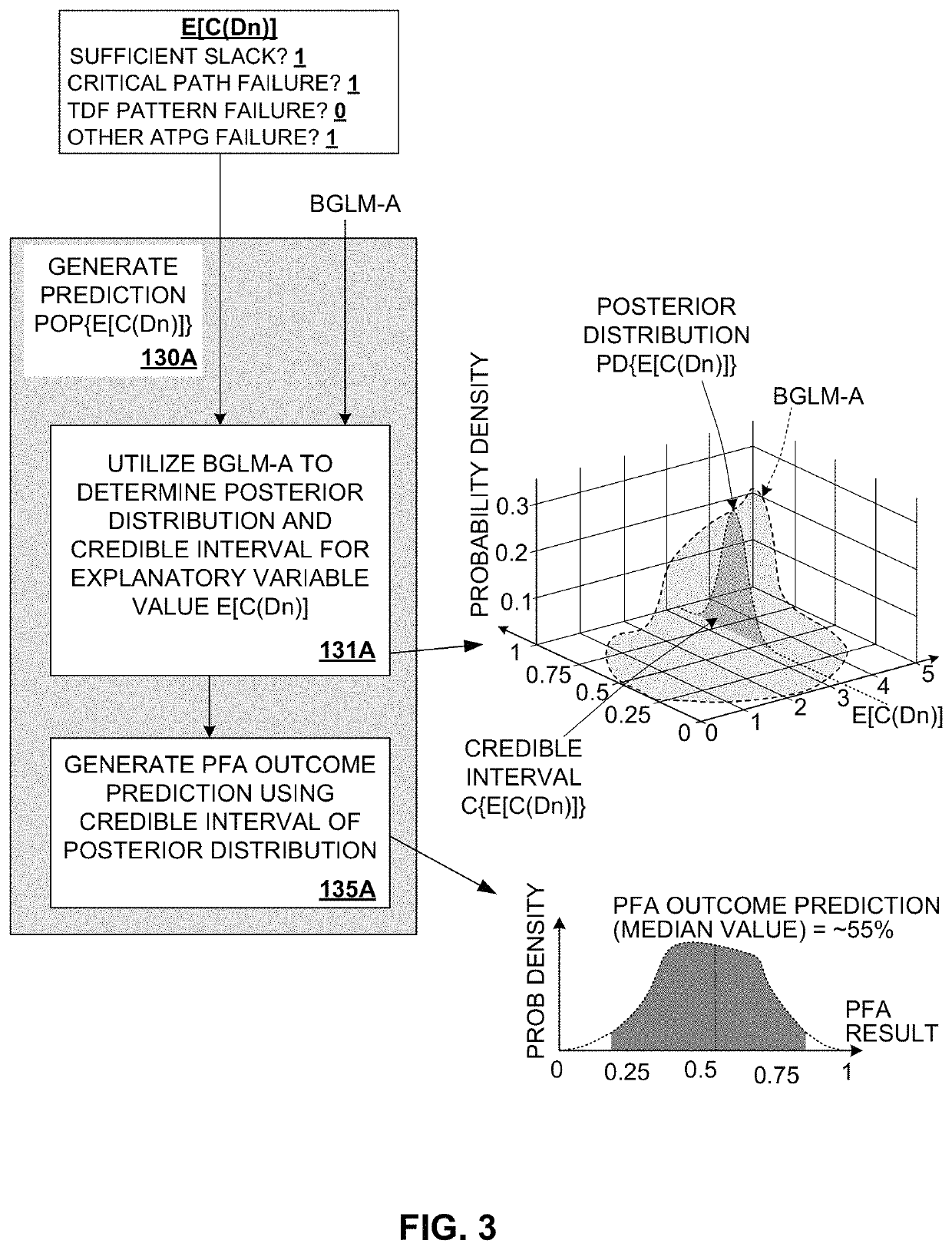Predicting no-defect-found physical failure analysis results using Bayesian inference and generalized linear models
a technology of general linear models and physical failure analysis results, applied in the direction of configuration cad, stochastic cad, instruments, etc., can solve the problems of unnecessary delay in time-to-market for the associated ic device, failures due to timing exceptions, etc., to reduce the occurrence of these items, improve the test and diagnosis phase, and effectively capture the uncertainty of evaluation data
- Summary
- Abstract
- Description
- Claims
- Application Information
AI Technical Summary
Benefits of technology
Problems solved by technology
Method used
Image
Examples
example usage
[0058] The goal of the proposed PFA outcome prediction method is to predict the outcome in Physical Failure Analysis where the possible outcomes are “The failure analyst finds a visible defect in the integrated circuit” (PDF) or “The failure analyst does not have a successful outcome in the physical failure analysis job and no defect is identified” (non-PFD). The defect can be any type of anomaly in the integrated circuit such that the behavior or parameters are outside of the expectation of what is considered a good, working IC device. Commonly these types of defects are extra or missing material induced by an imperfect manufacturing process. Other types of defects include parametric issues that cause the IC not to work as specified in all of its timing, voltage, and temperature conditions.
[0059]In one embodiment, the parameters of each BGLM model are the number of Physical Failure Analysis cases attempted, η, and the unknown probability of an NDF result, ρi, for a given observed o...
PUM
 Login to View More
Login to View More Abstract
Description
Claims
Application Information
 Login to View More
Login to View More - R&D
- Intellectual Property
- Life Sciences
- Materials
- Tech Scout
- Unparalleled Data Quality
- Higher Quality Content
- 60% Fewer Hallucinations
Browse by: Latest US Patents, China's latest patents, Technical Efficacy Thesaurus, Application Domain, Technology Topic, Popular Technical Reports.
© 2025 PatSnap. All rights reserved.Legal|Privacy policy|Modern Slavery Act Transparency Statement|Sitemap|About US| Contact US: help@patsnap.com



